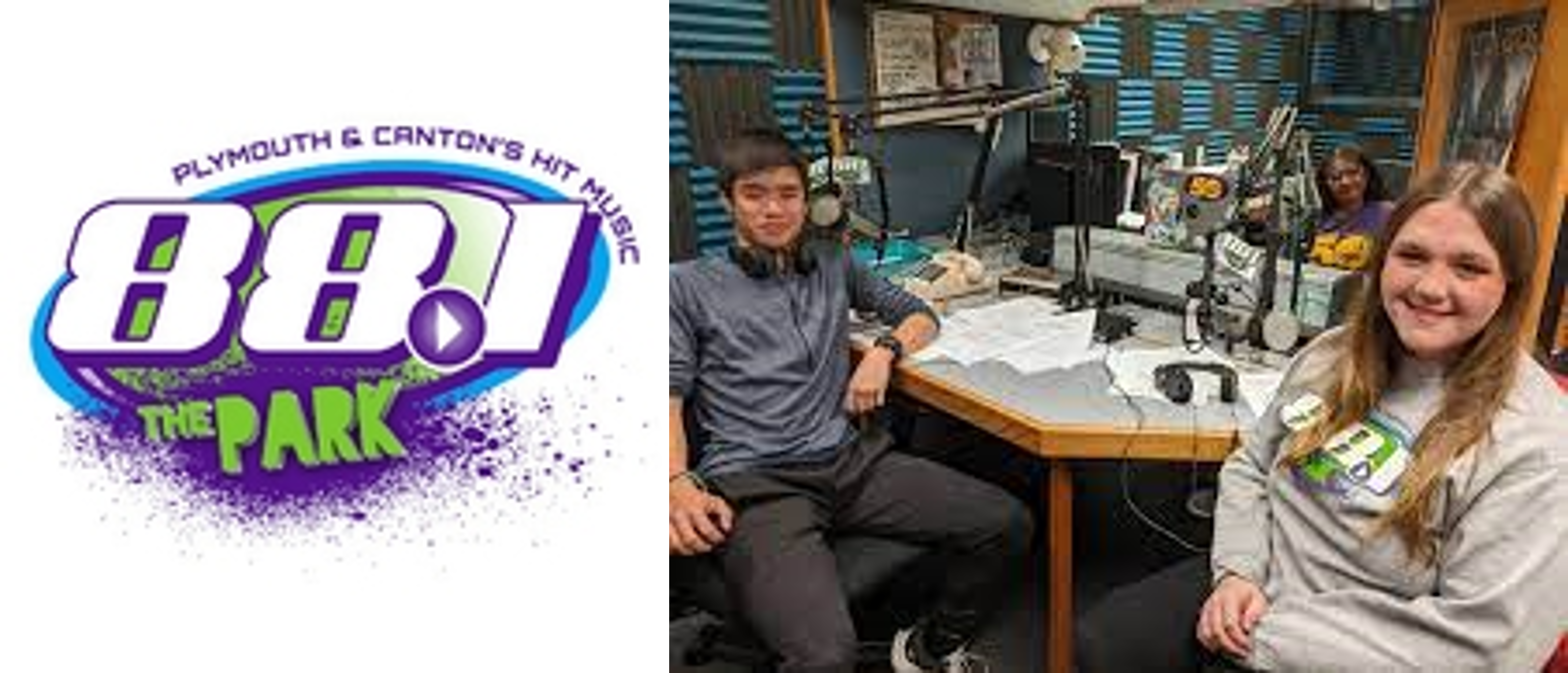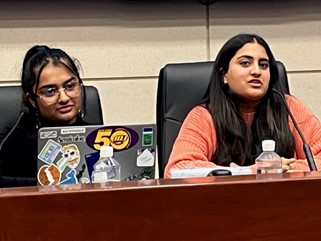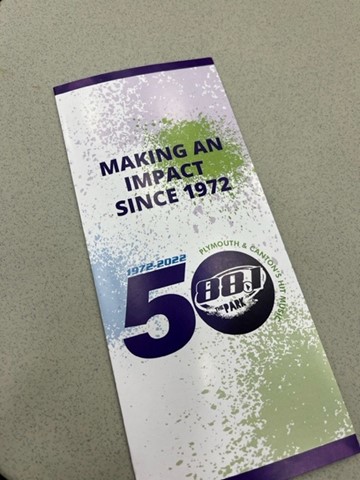
In recent years when speaking with people in high school and college in their classrooms or while presenting, I have felt the tables turning. There was a time when people like me visited school to lecture students about “life in the real world.”
Not anymore.
We grizzled radio veterans can learn a lot from young people who often have little to do with radio and the content we create. If you want to stop a radio pro in their tracks, ask him or her what Gen Z wants. You’re likely to get “radio silence.” And for good reason. We don’t even research this generation, nor do we cater to them.
And yet, they may hold some of the answers to what radio professionals ought to be looking for. Last week, brother Paul spent an afternoon in a Detroit area high school. He returned energized and excited about what he saw and heard, offering to share it with you.
How could I say no? – FJ
By Paul Jacobs
The Plymouth-Canton area is a bedroom community in suburban Detroit, nestled between Ann Arbor to the west and inner-Detroit suburbs to the east. The community is predominantly white (72%), well-educated (59% have a Bachelor’s degree or higher), with a median household income over $107,000.
Perhaps like your city, town, or municipality, this area represents a suburbia full of schools, services, and shopping. But also like a growing number of regions across the United States, it now finds itself woefully lacking in news coverage from in and around the community. Reporting on school board meetings, election issues and candidates, events and culture, and city government issues is elusive, not such an odd state of affairs in 21st century America.

Two weeks ago, I wrote a guest post about George Santos and an important news story that eluded all the big players. Politics aside, New York voters elected an apparent fraud to the U.S. House (we’ve lost track of the lies).
If you’ll recall, the story broke before the election at a small, local weekly newspaper in the district, but was not followed by New York’s news behemoths until it was too late – after the votes were cast. Now, the electorate is stuck with a representative who has grossly misrepresented himself. And there may be nothing anybody can do about it.
The gist of the post was to point to the lack of local news coverage, and wonder why a gaping opportunity – or in marketing terms, “a hill” – is unaddressed in most markets.
And that brings us to suburban Detroit. As mentioned, like so many communities, Plymouth-Canton doesn’t have a reliable source of local news coverage, making it challenging for residents to find out what’s happening in their city. Their local newspaper – the Observer-Eccentric – was sold to Gannett in 2005, since falling victim to budget-cutting and shrinking resources. The paper once had their offices in downtown Plymouth where you could just walk in and talk to reporters, suggest stories, and pitch your public service events.
 That office is now closed. And last month, the newspaper announced they were no longer going to produce a print edition. In other words, they’ve undergone significant cuts to their newsroom and as a result, the quality of their local news coverage has suffered.
That office is now closed. And last month, the newspaper announced they were no longer going to produce a print edition. In other words, they’ve undergone significant cuts to their newsroom and as a result, the quality of their local news coverage has suffered.
None of this is unique. It’s part of a growing trend of declining local newspapers, along with the thinning out of television and radio newsrooms. Thanks to the Internet, we have more news and information coming from more sources than we know what to do with. And yet in so many communities, local news coverage is poor or nonexistent.
On the heels of the Santos post, I was invited to attend a “Lunch and Learn,” organized by the Local Impact Alliance. They gather monthly to share information with local residents. The topic? “How High School Students Are Filling The Local News Void” and the presentation was made by a high school radio station, WSDP (88.1 The Park), a student run radio station embedded in the school. Needless to say, my curiosity was piqued.
WSDP is an award-winning radio station with a rich history. They’ve been nominated for four Marconi awards (in the public radio category) and have won numerous Michigan State Broadcaster honors. They are celebrating their 50th year on the air, an incredible accomplishment for any radio station. In all, the station has more than 1,000 proud alumni.
Numerous graduates of this high school program have gone on to stellar careers in broadcasting. The station is run by broadcaster and educator Bill Keith, and by  Assistant General Manager and former journalist John Kreger. The station’s format is CHR, and their educational charge is to train students on all aspects of radio broadcasting, including news.
Assistant General Manager and former journalist John Kreger. The station’s format is CHR, and their educational charge is to train students on all aspects of radio broadcasting, including news.
During the presentation, Bill outlined why local news is of paramount importance to the community and democracy. He described his mission this way:
“Our plan is to make 88.1 The Park more than a ‘high school’ radio station. We want to become a vital community resource.”
Nothing like aiming high – even in high school. As the Observer-Eccentric vaporized with no local outlet to replace it, Keith and Kreger rose to the occasion. Their focus on local news is logical, smart, and important. They are exposing their teenage students to rigorous training in journalism, bolstered by the experience of doing research, writing, reporting, interviewing, and editing.
This regimen will prepare these kids for jobs in broadcasting after graduation or to assume leadership positions in college radio or other journalistic endeavors. I told this story to a colleague in radio who questioned about the wisdom of training students for jobs that may not exist when their schooling is finished.
But these skills are universal. News gathering is an exercise in storytelling. And the process of reporting their communities will further their careers, no matter what path they take. It will also prepare them to be better citizens, wherever they make their home.

How wise are these kids? The Park’s news operation is run by News Director Anuya Shetty and Public Affairs Director Avneet Pandher (both pictured). Their mission is a simple but important tome:
“We want to give voice to all parts of the community who otherwise might not have a chance to get their information or stories out.”
That goals statement is apropos for every commercial and public radio station in America. It just so happens to come from a couple kids not old enough to vote, but who certainly understand the value of journalism in a democracy.
The students are responsible for the news heard on the air, covering everything from upcoming events to live election night coverage for races relevant to their local community. Along with daily news coverage, “Community Focus” is a 10-15 segment that hones in on local issues, upcoming events in the community, storytelling about interesting and notable locals, and highlighting educators in the district.
Over the past few years, in one focus group after another, we consistently hear listeners verbalize the need for more local coverage and information from their favorite station, whether it’s public or commercial. And in our Techsurveys, we continue to see the importance of local and community coverage grow with each passing year.
need for more local coverage and information from their favorite station, whether it’s public or commercial. And in our Techsurveys, we continue to see the importance of local and community coverage grow with each passing year.
News about Biden, Trump, COVID, or inflation is easy and ubiquitous – there are thousands of sources available. But finding out what’s happening in your community, school district, or local downtown area is nearly impossible. It is a premium news product, and yet few media outlets embrace it. And then along comes this student radio station running circles around their much larger and better-funded colleagues. It is truly inspiring.
I ronically, during the Q&A portion of the presentation, a representative from the Canton Township Board of Trustees complained he hadn’t seen a local journalist covering a trustee meeting in over two years. As he said this, both Anuya and Avneet smiled knowingly. They know opportunity when they see and hear it.
ronically, during the Q&A portion of the presentation, a representative from the Canton Township Board of Trustees complained he hadn’t seen a local journalist covering a trustee meeting in over two years. As he said this, both Anuya and Avneet smiled knowingly. They know opportunity when they see and hear it.
It is noteworthy that a group of highly motivated, savvy high school students recognize the need in their commmunity, as well as seizing the opportunity vacated by so many mainstream media outlets. And credit to their leadership and the support of the school to pursue this important mission.
If there’s a bad actor like Santos trying to game the system, the Plymouth-Canton news team from the Park are ready to do their jobs.
Maybe it’s time for radio to go back to school.
- The Revolution Will Not Be Monetized - December 30, 2024
- What Kind Of Team Do You Want To Be? - October 4, 2024
- The Revolution Will Not Be Monetized - August 20, 2024




Paul, your story resonated with me, as a new generation of reporters, broadcasters and community leaders are on the way. It brought back personal memories of when my 5th grade class started our own school newspaper back in the day. The creativity of youth, the drive of our young people bodes great promise in the continual evolution of content.
They are not only smarter, they tend to be more assertive, so combined with tools that make covering stories easier than many years ago, have the ability to do this work.
It’s hard to hang around students like this and not be inspired and hopeful.
This is easily my favorite article you both have done. Thanks for pointing this out and I hope more take notice.
Andy, thanks so much for the kind remark. Let’s hope this gets some people’s attention – lots of opportunity for local radio.
Local News is a smart investment!
On so many levels – as a business model, local news can make a station stand apart, and from a community-service aspect, it’s fertile ground that also makes the region better off. Win-win
The public broadcasters in New England, including my state, have radio stations throughout their territories carrying uniform programming (mostly news and public affairs programs). I’m urging my state’s broadcaster to consider carving slots into that monolith for local news relevant to the individual communities served by specific frequencies, ideally garnered by stringers in those communities. I see no technical reason it can’t be done, and with high school programs like the one you observed in Michigan there should be no shortage of local talent. If there’s a better way to “make radio cool again” I don’t know what it would be.
Some statewide/regional pubcasters do have staff or even full offices/studios in multiple locations: For example, Wisconsin Public Radio has hubs in Madison, Milwaukee, Green Bay, La Crosse, Eau Claire, Wausau, and Superior–while Minnesota Public Radio itself has several (and possibly even more).
Exactly. This isn’t a radical thought, and it’s filling an important need.
Thanks for sharing
I also think it’s “making radio relevant again” to the local communities we serve. This isn’t brain surgery – if we are truly doing our jobs connecting, promoting and informing about our local communities shouldn’t be a question – it should be an expectation.
We’ve (The Coast) been fortunate here to be closely affiliated with KAKX-FM- Mendocino Unified School District Student Powered Radio- and , like you, are continually energized and surprised by what comes up- They don’t know “Can’t”. Thanks Paul for the focus on a real asset.
Radio’s future is bright if we connect with and empower the next generation. They are smart and driven. And the hole for local news is pretty huge.
Hope you are doing well, Tom.
“Along with daily news coverage, ‘Community Focus’ is a 10-15 segment that hones in on local issues, upcoming events in the community, storytelling about interesting and notable locals, and highlighting educators in the district.”
In other words doing the things broadcast licensees are required–but all-too-seldom–do.
Thanks for the inspiring blog, Paul. Gives an old broadcaster hope.
I’m often pretty stoked when I’m around aspiring radio folks, There is hope for the industry’s future as long as we invite them in and learn from them (yes, I said that).
Hope you are doing well, Dave.
Great story! My wife is a proud alumnus of WSDP and my youngest niece is a current staffer there. The death of our local newspapers being an issue was really brought to light with the Santos situation. My grandmother was an editor at the Wayne Eagle in Wayne, Michigan for many years and would be disappointed at the state of local news. My father in law is a Detroit News retiree and it disappoints him to see his career become more and more irrelevant after experiencing the Gannett experience firsthand. Broadcast radio may be local news’ last hope and these young journalists are shining examples of the potential that is out there. I only hope they don’t have to face the realities of short sighted management that can’t find it in the budget to give these young future professionals the opportunities they deserve and that they work for PD’s that will give them their time to shine.
To me, being “local” (news, information, events) isn’t just an expense. it’s an untapped opportunity that we know people want, whether they listen to the radio or not. Who wants to fill the hole????
Paul, sure wished I knew that you were doing this great story spotlighting high school power station WSDP. A student, and friend, who helped put the station on the air some 50 years ago, along with the late Bonnie Dore and faculty advisor John Seidelman, should have been included. He’s Rob Milford who worked at ABC News NY when only 21, did radio in Dallas, Houston, Orlando, Indy and many other stops. He was embedded with the Marines at the start of the Gulf War and covered several hurricanes for CBS News! WSDP has turned out quite a crop of very talented broadcasters. Really glad you shared their story. BTW, FYI Rob is currently marketing director for The Lobster Feast restaurants in Orlando.
Thanks for this context and history, Art. How many high school stations have been around for 50 years, much less as successful as they are?
The folks at the station are the future of our industry, and supporting stations and school districts that are making the investment is really important.
Their local reporting is also more fair and balanced than corporate owned media.
Well, let’s put it this way, Lorna – they haven’t learned any bad habits…yet.